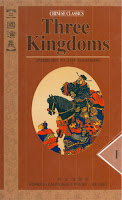 My lessons from “the other side of a coin” started when, together with my sons, we decided to go to the Mount Kilimanjaro. My decision had nothing to do with Kilimajaro being the biggest free standing mountain in the world or because it is the tallest mountain of the African continent and not even because it bares my name in it. I joined the idea because it was my long lived dream since the times I lived in Africa.
My lessons from “the other side of a coin” started when, together with my sons, we decided to go to the Mount Kilimanjaro. My decision had nothing to do with Kilimajaro being the biggest free standing mountain in the world or because it is the tallest mountain of the African continent and not even because it bares my name in it. I joined the idea because it was my long lived dream since the times I lived in Africa.To climb the summit of 5.895 m in eight days via Lemosho route had to be planned well in advance as we were not physically fit for such a challenge. For months prior to the challenge we have been successful at climbing and trekking to each and every hill or mountain available to us in Slovenia. After Kilimanjaro I realize that it was not the trekking of more than 70 km or freezing temperatures that we have underestimated. It was “the other side of a coin.”
High altitude and lack of oxygen proved to be subjected to our naivety in thinking that climbing such a mountain is only a physical challenge. Slow walk, introduced by our guides from the ANDA African Adventure, at the beginning of our tour seemed ridiculous to us, but each succeeding day on the mountain proved that it was the only compulsory physical possibility for success.







